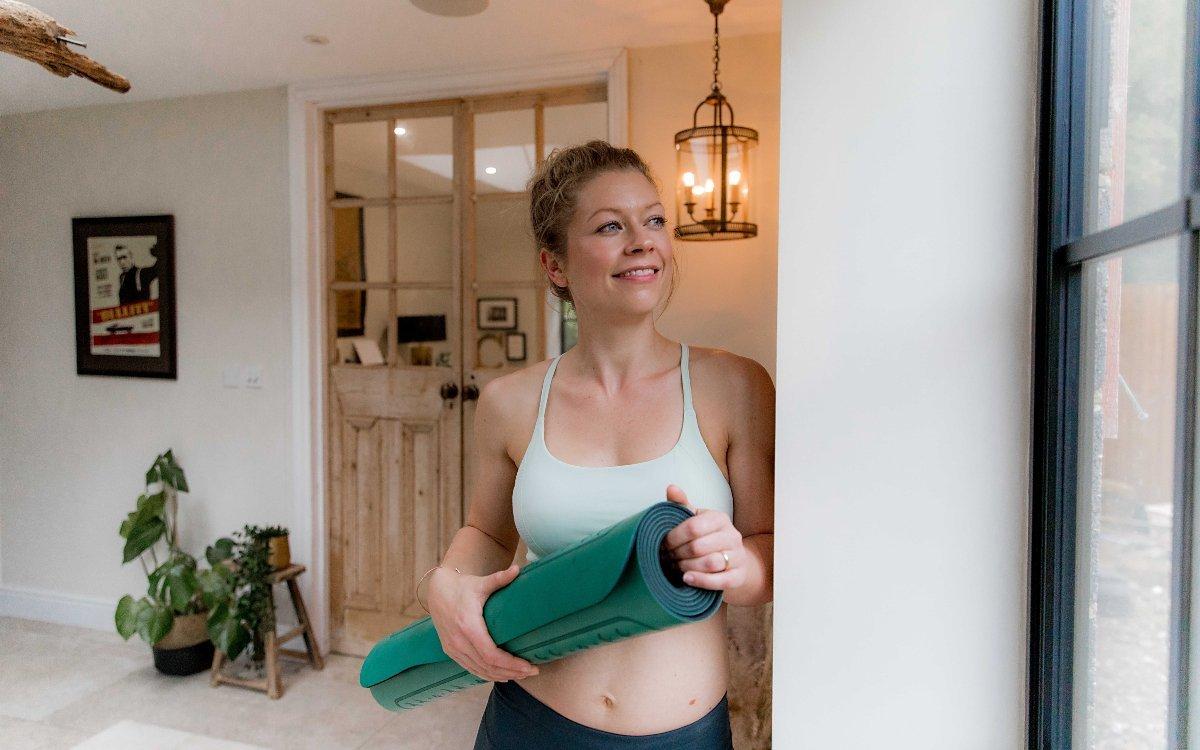The beginner’s guide to Pilates
Our expert guide to the whats, whys and how-tos of Pilates – the workout everyone needs in their lives
Pilates is often confused with yoga, but it’s actually very different. While yoga was designed to prepare the mind for meditation, Pilates was created to build a strong, functional body. ‘Pilates brings your body back to where it should be,’ explains Hollie Grant, founder of The Pilates PT Method. ‘It improves your posture, strengthens weak muscles and reduces back pain.’
And that goes for gym bunnies and couch potatoes alike. ‘The beauty of Pilates is that it is suitable for everyone,’ says Hollie, who has trained octogenarians, mums-to-be, professional athletes and clients recovering from spinal surgery. ‘It is low impact, safe yet powerful, and valuable for everybody – I know no one who doesn’t need Pilates in their life.’
What is Pilates?
Joseph Pilates developed Pilates during the First World War, to help build function and strength in prisoners held in internment camps – even those confined to a hospital bed. It’s made up of more than 500 resistance exercises that use your own bodyweight, or in some cases props like the Reformer, resistance bands, rings and balls, to reduce muscular imbalances and improve core strength.
‘Modern life involves so much flexion – looking at phones, sitting at laptops, driving cars – that our bodies can end up forgetting what they were designed to do,’ explains Hollie. ‘Pilates fixes that. As the body gets stronger and our posture improves, we’ll often notice an increase in flexibility and mobility as well.’
Your first Pilates class
Most Pilates classes are suitable for all abilities, as experienced teachers will tailor moves to suit both beginners and more advanced students. But do tell your instructor that you are a beginner, so they can explain the moves and cues. It’s also important to mention any injuries. ‘I would ask the studio for a recommendation, as some Pilates teachers have a background in physiotherapy or physical therapy,’ Hollie advises. ‘If you’re recovering from injury, Reformer Pilates can be a great alternative to mat Pilates as the machine can really help you to feel supported and to target specific areas.’
Aim for two classes a week – this will give you the momentum you need to develop basic technique and build strength, plus enough time to recover between classes. Even if you already exercise regularly, you might well feel aches in muscles you never knew existed. You can build up to as many as six classes a week, if time allows. It’s useful to wear form-fitting clothes so that your teacher can assess technique and form, Hollie advises. ‘But otherwise, you just need yourself, an open mind and a willing body!’
Pilates at home
If you don’t feel comfortable going to a Pilates class or can’t find one you like, why not give a live or on-demand class a go? ‘Online classes are so convenient,’ says Hollie, who teaches live classes six days a week. ‘But teaching online is a real skill, so it’s important to find someone who knows their stuff. They’ll talk a lot, offering lots of cues, and adapt the class to meet everyone’s needs.’
If you’re doing a live class, remember to let the instructor know that you’re new. And do shop around. ‘Ask friends who they train with, and if you don’t gel with one instructor, try another, as we are all so different,’ Hollie advises. Most online classes don’t require any equipment, so roll out your mat and you’re ready to rock.
Main image: Pilates PT




